The U.S. Navy’s Mine-Hunting Drone Is Ready To Go
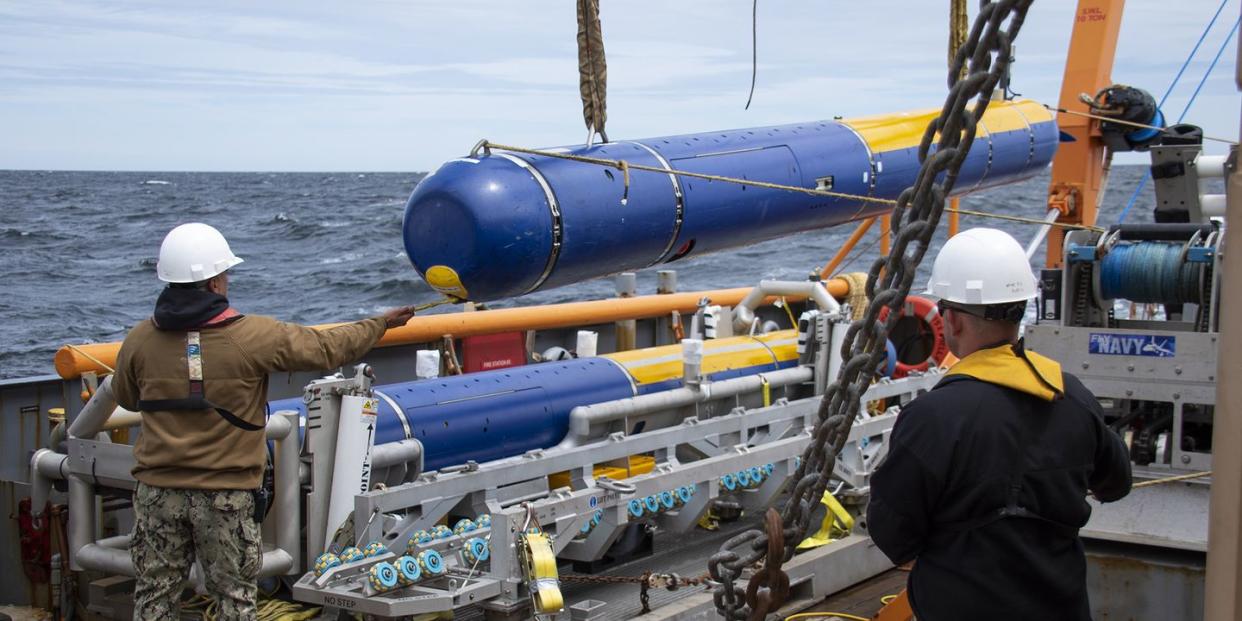
This week, the Navy cleared Knifefish for low rate initial production, one step short of full production.
Sea mines, commonly referred to as “weapons that wait,” are surprisingly effective weapon systems. Of the 19 U.S. Navy warships seriously damaged or sunk since World War II, 15 were the victims of mines.
Theoretically, 30 Knifefish packages should give the Navy the ability to surge a large number of mine-hunting ships at a time when their minesweepers are in bad shape.
The U.S. Navy has given General Dynamics the go-ahead to place the Knifefish drone system into production. The system, which uses drones to locate and map minefields, was in development for several years and at one point risked cancellation. The mine hunting system will be deployed on the service’s Littoral Combat Ships at a time when Iran is accused of mining the Persian Gulf.
On August 23, the Navy cleared Knifefish for low rate initial production, one step short of full production. The Department of Defense announced a $44 million LRIP contract yesterday, August 26. The service plans to eventually purchase 30 Knifefish systems, each of which consists of two drones, 24 for the Littoral Combat Ship class warships and another six for other ships.
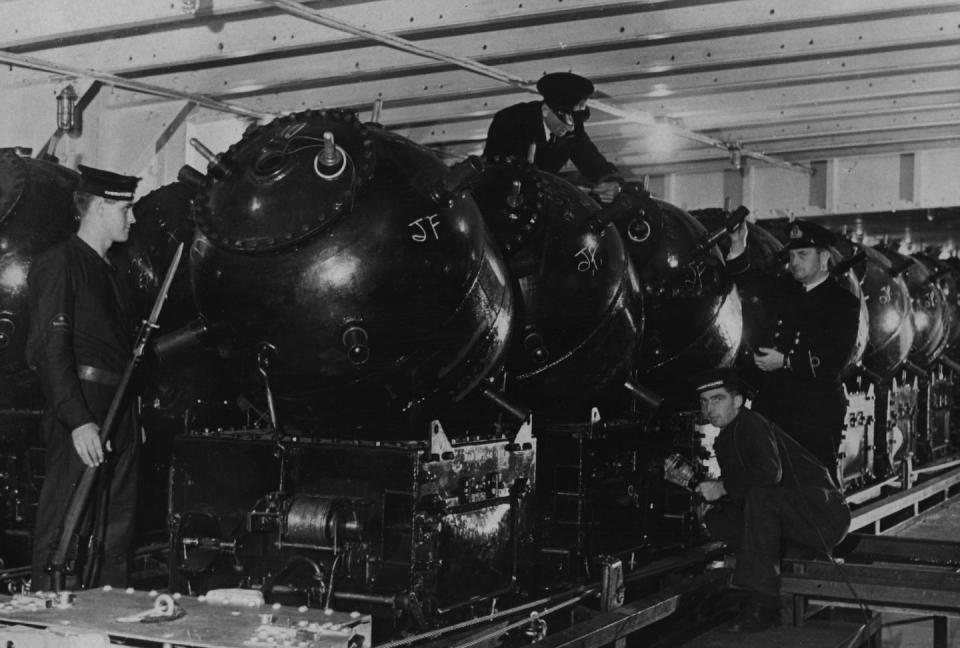
Sea mines, commonly referred to as “weapons that wait,” are surprisingly effective weapon systems. Cheap and easily deployable, they have the potential to damage or even sink the most sophisticated of warships, giving admirals pause before sending their fleets into areas that might hide sea mines. Of the 19 U.S. Navy warships seriously damaged or sunk since World War II, 15 were the victims of mines.
Enter the Knifefish. Knifefish is an autonomous unmanned underwater vehicle designed to sweep mine infested areas and chart minefields. A 2016 Department of Defense Inspector General report describes it like this: “The Knifefish uses low-frequency broadband sonar sensors to detect, classify, and identify buried and bottom mines. The Knifefish is capable of operating independently in shallow ocean water, and is launched and recovered from the LCS or craft or ship of opportunity. The Navy intends to use the Knifefish instead of marine mammals, such as dolphins and sea lions, which are currently used to detect mines on the ocean floor.”
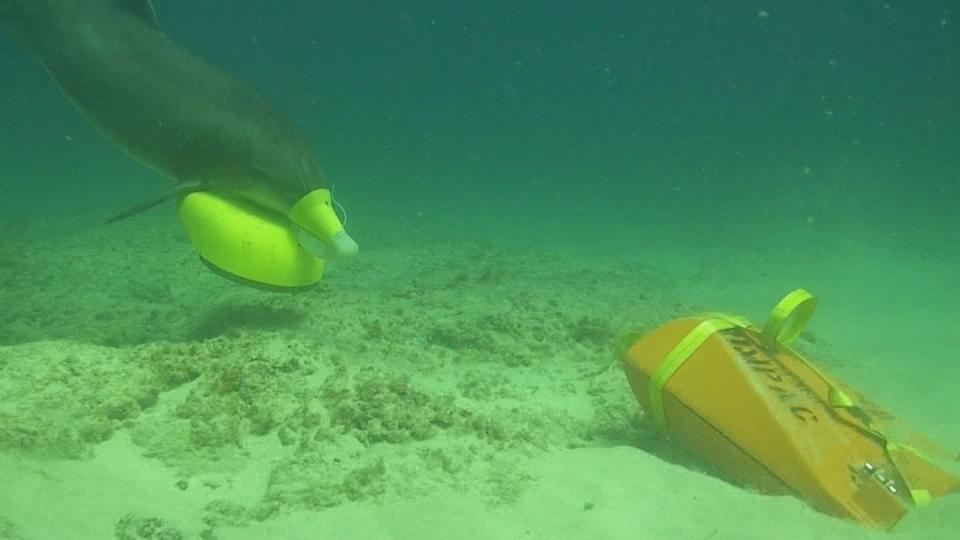
Another vital component of the Knifefish is software based—the drone is equipped with automated target recognition software technology developed by the Naval Research Laboratory. This saves minehunters an important step: while marine mammals could only locate mines, Knifefish will tell the Navy exactly what kind of mines are below, allowing them to begin a process of disposing them before human eyes actually see them.
Importantly, Knifefish is the only minehunting system carried by the Littoral Combat Ships that can detect mines buried in the seabed.
If the Navy discovers a possible minefield, a LCS will deploy its Knifefish drones from a safe distance and let the drone do all the detection work. This eliminates the physical danger to human crews (and maybe dolphins and sea lions as well). The mines can then be destroyed in place by dive crews or shipboard weapons.
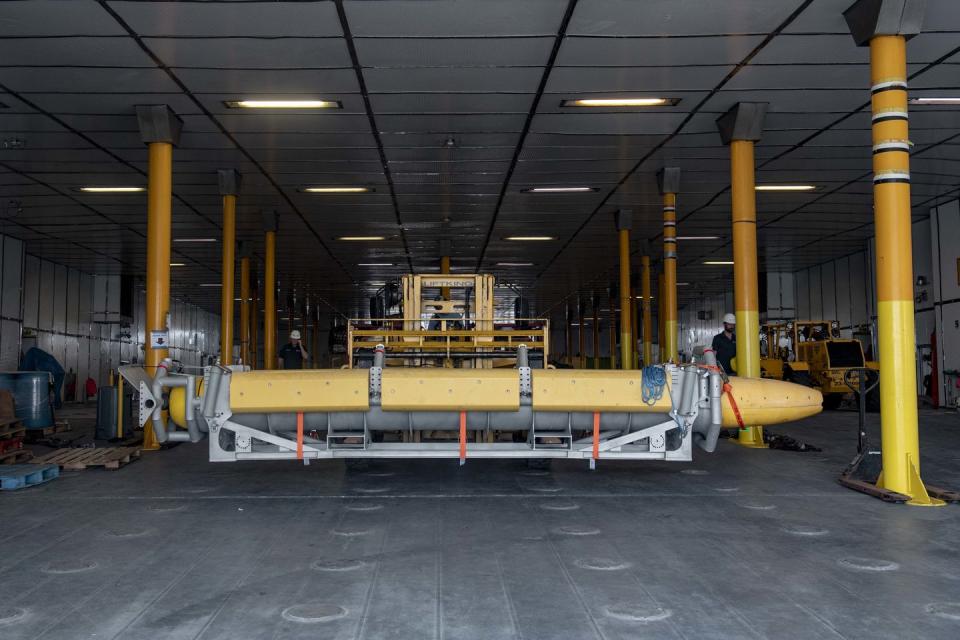
Knifefish has been under development for the better part of a decade, with persistent technical problems including the drone’s difficulty talking to human operators and its inability to actually find mines. In 2016, the DoD Inspector General’s office recommended the Navy cancel the problem unless the problems were fixed. Delays in the LCS mine countermeasures module and other modules have led to charges that the small frigate-like ships are under-equipped and not ready to take on important missions.
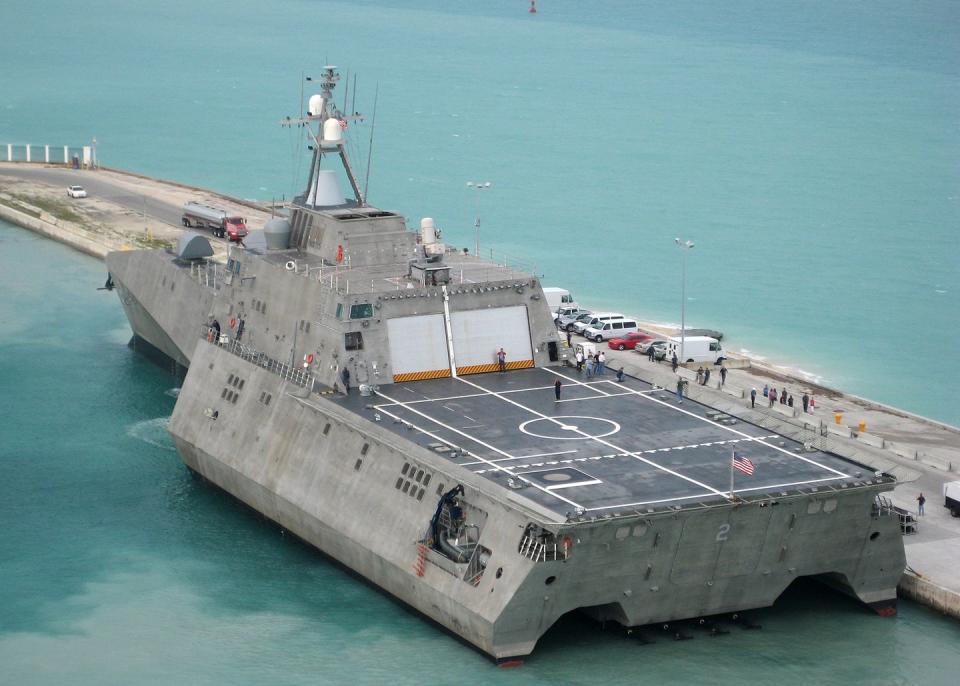
Minehunting has traditionally taken a back seat in the U.S. Navy to larger platforms such as aircraft carriers, amphibious assault ships, cruisers, and destroyers. The Navy has a small core of minesweepers in the aging Avenger-class, but by and large it depends on smaller allies to contribute their own minesweeping fleets to a multinational military operation. Ironically this has led to those larger platforms being the victims of mines, such as the amphibious ship USS Tripoli and the cruiser USS Princeton, and the frigate USS Samuel B. Roberts, all of which were damaged the Persian Gulf by sea mines.
Theoretically, 30 Knifefish packages should give the Navy the ability to surge a large number of mine-hunting ships to handle a future crisis as tensions with Iran rise and the country is suspected of planting mines in the shipping lanes of the Persian Gulf. Iran’s Revolutionary Guards Corps has also repeatedly threatened to close the Gulf’s Strait of Hormuz, a narrow waterway through which 21 percent of the world’s petroleum consumption passes.
You Might Also Like

